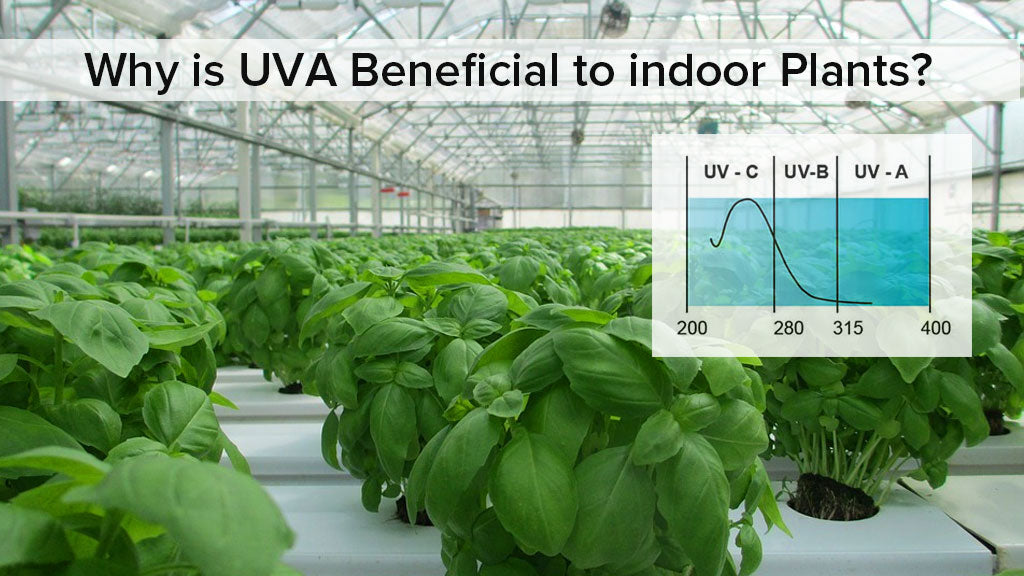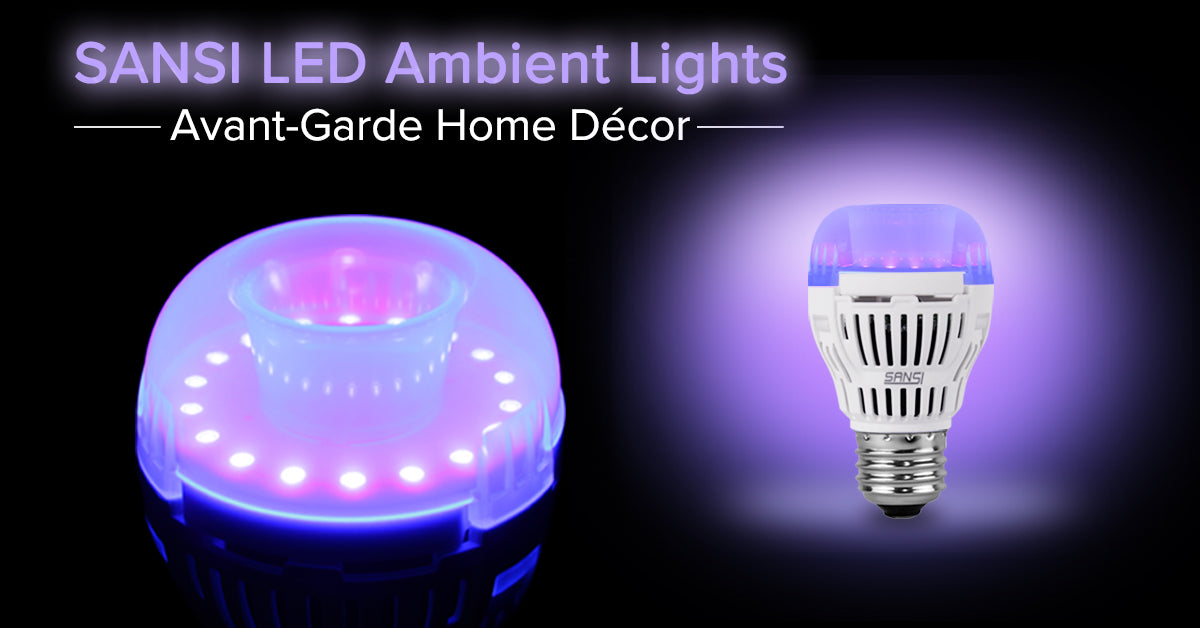
UVA has mostly been neglected in indoor grow light manufacturers as well as indoor gardeners. However, there are some major benefits to be had. Of natural sunlight UVA accounts for 95% of the UV radiation on earth, UVB is 5% and UVC is blocked out by the atmosphere. When it comes to lighting indoors, we are trying to recreate the most natural environment possible and the outside world contains a high amount of UVA radiation, so should our indoor areas contain it too?
What is UV Light?

UV is radiation and on the low end of the light spectrum. UV light is not visible to the naked eye. UV light is divided into 3 categories depending on its wavelength. UVA, UB, and UVC. UVA has the longest wavelength than UVB, UVC. UVA having the longest wavelengths meaning it has the lowest energy. UVA’s lower energy makes them safer for consumption than the other two UV bands. However, even UVA needs to be used moderately and safely. UVA light is used in tanning beds, reptile lights, and for lighting luminous paints and posters, etc in clubs or bars.
UVA’s Affect on Plants
Increasing Indoor Plant’s Yields

Typically, indoor grows, especially within greenhouses lack UV light. But real outdoor sunlit environments contain levels of UVA and UVB light. After a series of experiments conducted using whole plants under UVA light, we have concluded that:
Microgreens Pak choi, Basil: Saw an increased area of leaf size and weight.
Leaf Lettuce: Leaf size and weight again were increased under UVA exposure

Cucumbers: Had higher photosynthetic potential compared to cucumbers frown under red, green, or yellow light.

From these studies, the conclusion can be drawn that plants have reacted well in terms of size and growth underexposure to UVA radiation. A plant that is lacking in UVA exposure may not be reaching its size and weight potential.
UVA and Plant’s Nutrition
Most organisms exposed to UVA have some response. Humans produce vitamin D when exposed to UV light and plants do something similar. When a plant is exposed to UV light they release antioxidant compounds, flavonoids, phenolic acids, etc. These give fruits their colors and flavors. These compounds released are beneficial to our own health when we consume the fruits higher in flavonoids too. So exposing your fruits or vegetables to UVA may also increase their quality too.
Peppermint: Bigger leaves, increased terpenoids (terpenoids being antioxidants). So a higher concentration of antioxidants within the plant.

Basil Pak Choi: From UVA exposure, both plants saw an increase in total phenols.

UVA and Increased Plant Growth
It is true that UVA does not directly affect or increase photosynthesis. However, it does trigger some growth in your plants. How does UV light promote growth indirectly? Plants react to their environment. In nature, they adapt and overcome difficulties in their habitat, and exposing them to different levels of light sparks changes for them to adapt. UVA as well as blue light trigger photoreceptors, the main two being phototropin and cryptochrome. These cause increased chlorophyll production, larger leaves and opening the leave’s stomata to intake more CO2.
Basil, Pak choi: UVA irrigation resulted in larger leaves and overall weight
Lettuce: Increased leaf size and weight of a plant
Peppermint: Larger leaves
When Should You Use UV Light
In previous years UV light has been suggested in only the vegetative stage of the plant’s growth cycle. However, with UV light’s effect on leaf size, plant weight, and promoting more efficient photosynthesis, it can be now suggested to be used throughout every growth cycle of plants moderately. Using UVA light in plants has been shown to increase yields and health of indoor plants.
What is the Best combination of Lights?

To replicate the outdoors environment as closely as possible you’re going to need a full spectrum beam along with some UV light. A combination of both will replicate natural sunlight as close as possible promoting healthier plants and larger yields. Full-spectrum grow lights are subject to each manufacturer’s production line, so there is no set standard. Each LED company may make them slightly different. Due to the fact, full-spectrum is not a standardized measurement, you may need to purchase a full spectrum grow light and a low-level UV bulb to work together.
What Are The Best Lights for Indoor Grow Lights?

For a combination of UVA and full spectrum grow lights SANSI can provide both. With a small 5W UVA bulb along with a 70W indoor full spectrum grow light. The combination of a full-spectrum light and a UVA bulb will promote healthier plants in a more natural environment. Creating larger yields with healthier happier plants.
SANSI’s 70W Indoor Grow Light & 5W Indoor UVA Bulb
SANSI ‘s 70W indoor LED grow light can be used indoors to replicate natural sunlight with its full spectrum beam Although used on its own will still promote healthy happy growth for your plants throughout all the stages.
If you want to combine UVA light with a 70W indoor full spectrum grow light, creating a more natural indoor grow environment then follow the link here to the 70W indoor grow light and follow through the website tabs for the UVA 5W bulb:



